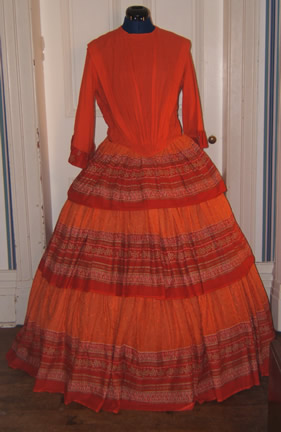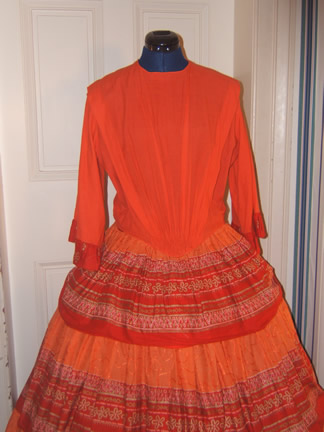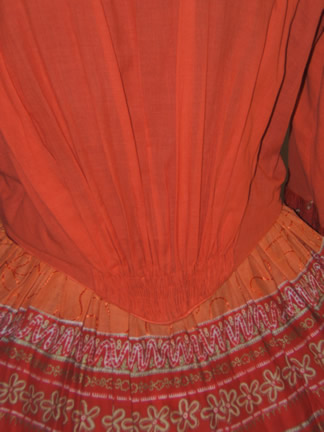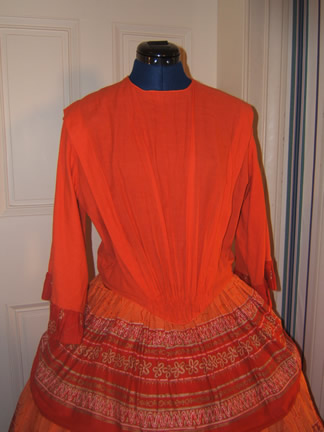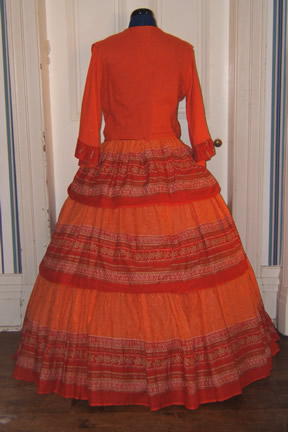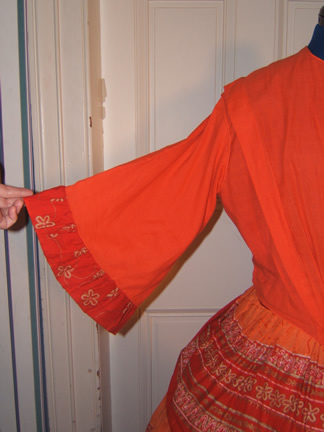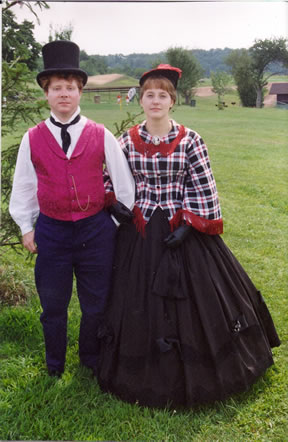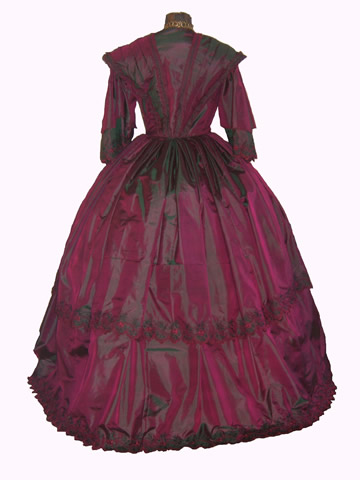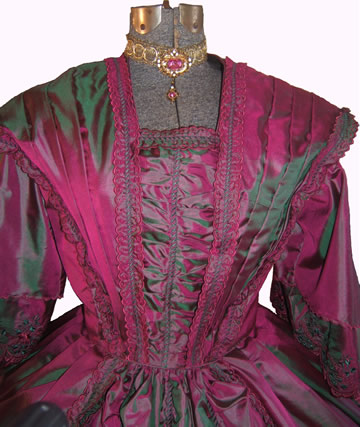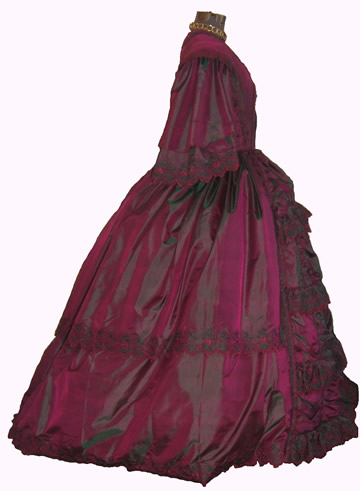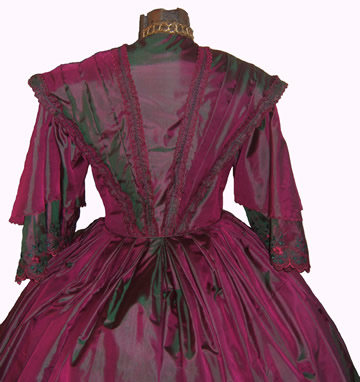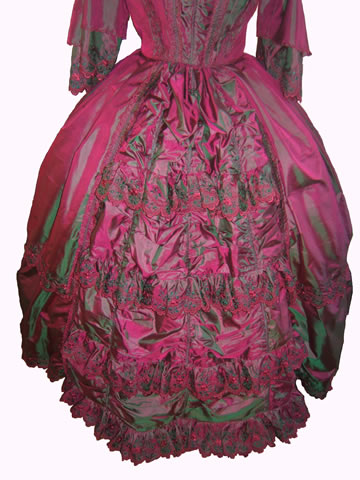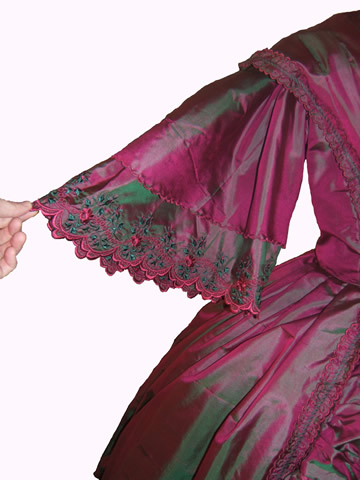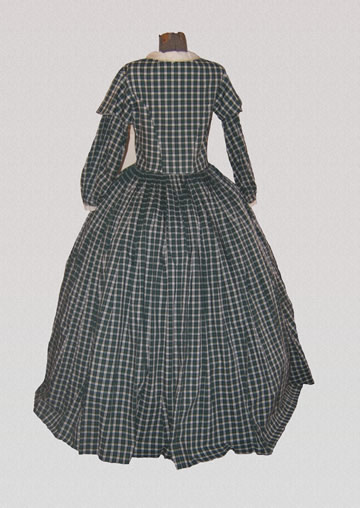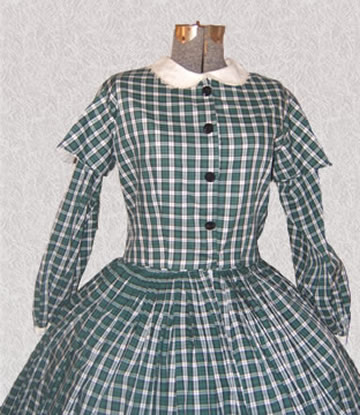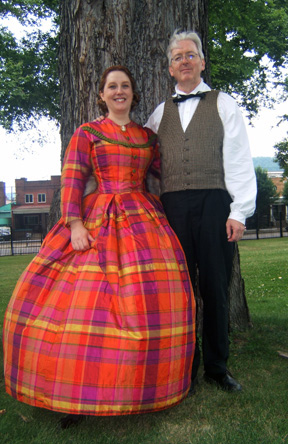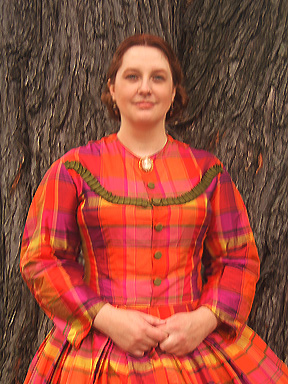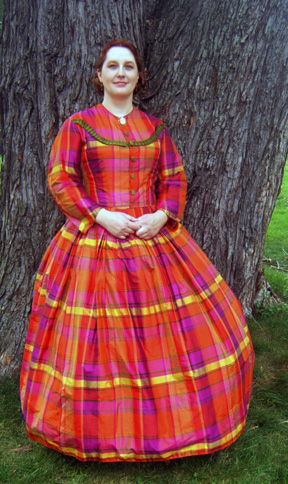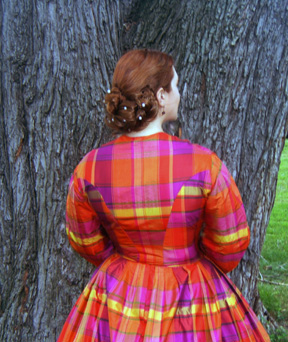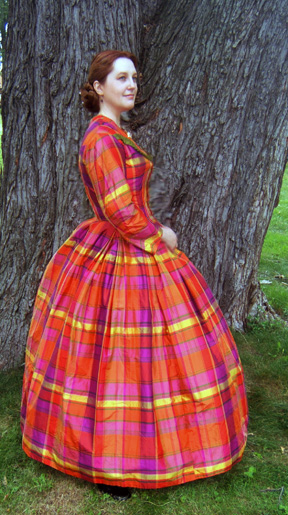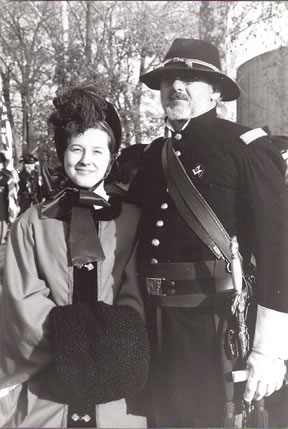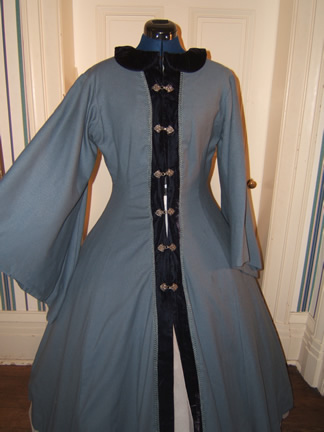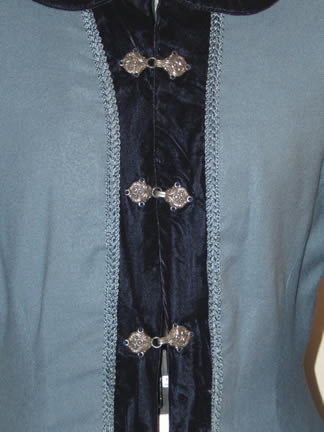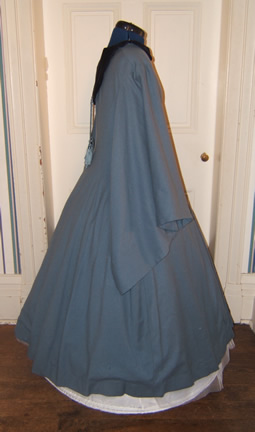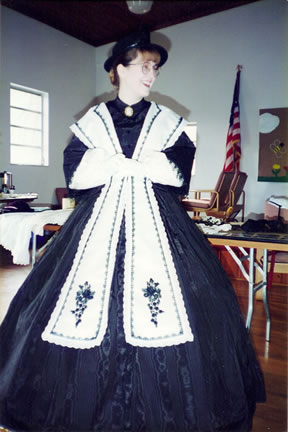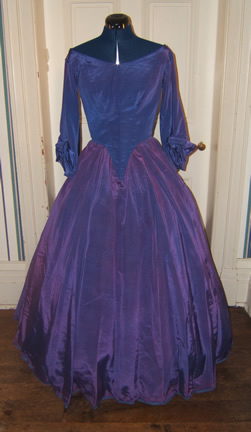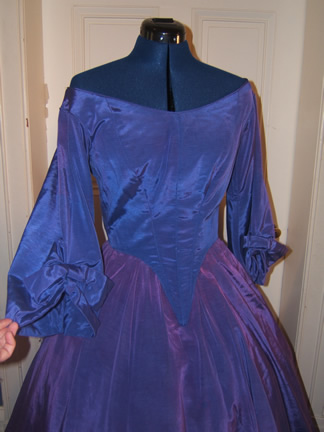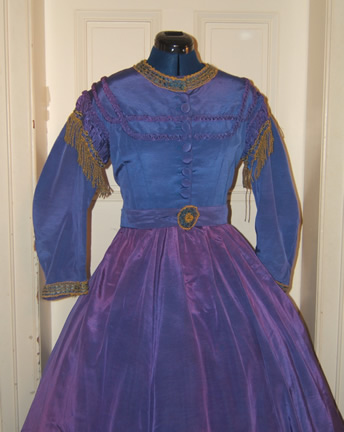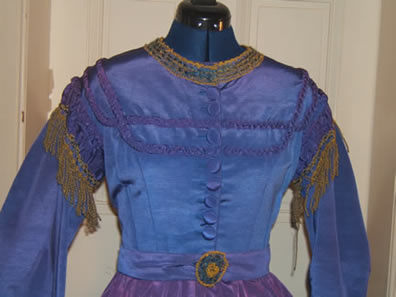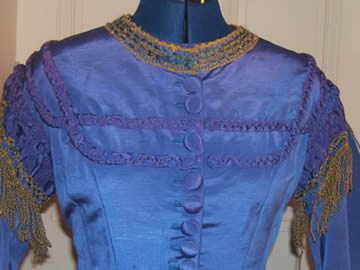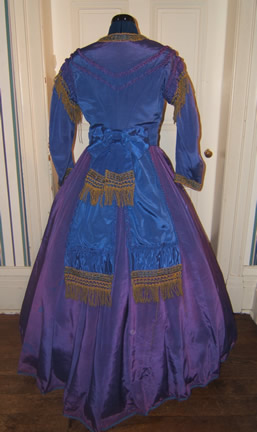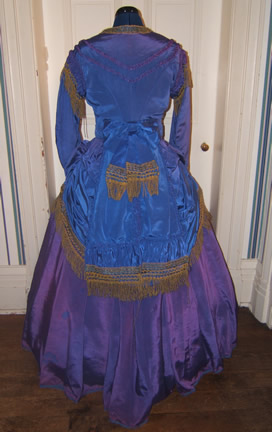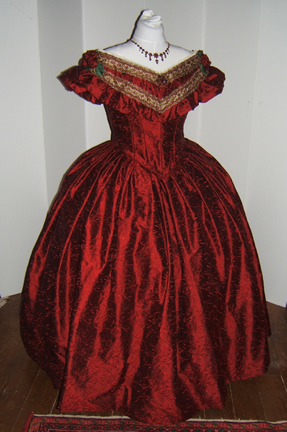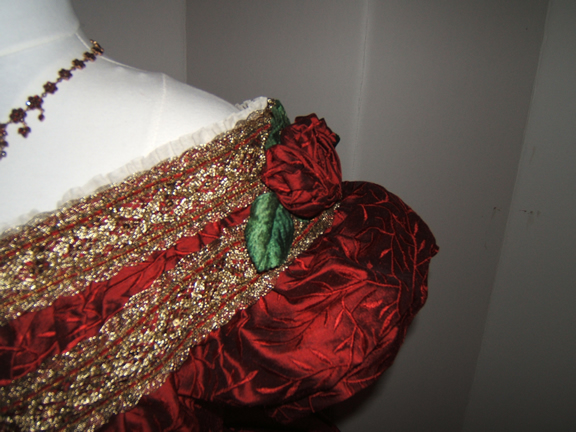

Main Menu
Portfolio Main Menu
Medieval
18th Century
Regency
Romantic
Antebellum/Civil War
Late Victorian
Edwardian
Underpinnings
Millinery

Antebellum / Civil War Menu
This site is no longer being updated - Go to NEW Site!
OK, I'll admit it - I did a lot of Civil War re-enacting in my 20's. That explains why I have more dresses from this period than most others. The 1850's saw the rise of the hoopskirt - the multiple petticoats of the past two decades fell out of favor in the wake of this new device. The basic shape of the hoopskirt changed over the course of the time it was in fashion. In the mid to late 1850's, the skirts were bell shaped. In the early 1860's this changed so there was slightly more fullness at the bottom, and by the late 1860's the eliptical hoopskirt came into fashion. The eliptical hoop was flatter in front and wide towards the back. This further evolved into the bustle period that began in the 1870's.

